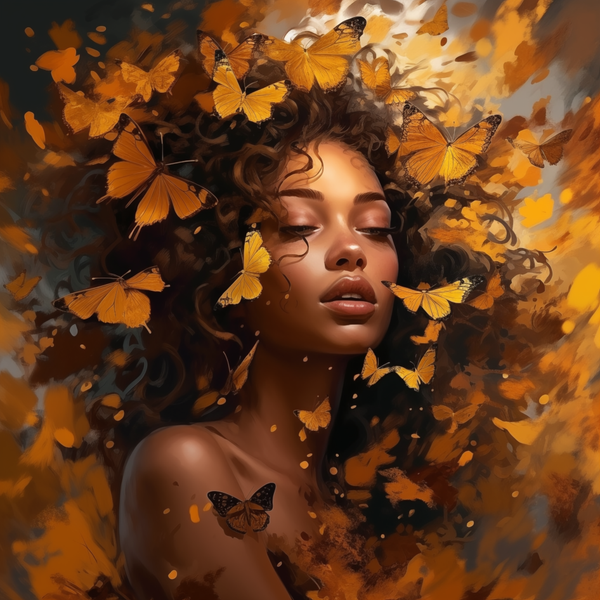The pantheon of ancient Egyptian deities is rich with symbolism and complexity, where gods and goddesses not only represented the elements of the world around us but also the profound characteristics within us. Among these deities, few encapsulate the essence of divine femininity and the power of duality as profoundly as Hathor and Sekhmet. These two goddesses, seemingly opposite yet intrinsically connected, offer a fascinating perspective on the balance of nurturing love and protective rage that defines much of the human experience—and particularly womanhood.
Hathor: The Velvet Touch of Love and Joy
Hathor is the goddess of many things—music, dance, joy, love, sexuality, and maternal care. She is the ‘Lady of the Stars’, the ‘Mistress of Heaven’, revered for her gentle nature and life-giving qualities. Often depicted as a serene woman with the ears of a cow or as the cow itself—a universal symbol of nourishment and motherhood—Hathor embodies the nurturing spirit that fosters growth and harmony.
In the time of the Pharaohs, Hathor was worshipped as the divine patron of women, and her temples were places of music and celebration. The vibrancy of her festivals was a testament to the joy of living and the beauty of the world. In today's terms, Hathor would be the reflection of the unconditional love of a mother, the comforting embrace of a friend, and the passionate creativity of an artist. She is the soft strength that pulsates in the quiet but formidable presence of the nurturers and caretakers in our society.
Sekhmet: The Roaring Flame of Power and Protection
In stark contrast, Sekhmet is the embodiment of the warrior spirit. Her name means ‘the Powerful One’, and she is depicted as a lioness, the fierce hunter known for her prowess. Sekhmet represents the consuming force of the sun's heat, the destructive power of a scorching desert wind, and the protective rage that can be summoned to defend the cosmic order of things.
The legends say that Sekhmet was born from the fire of Ra’s eye to act as his avenger, bringing about destruction to those who strayed from Ma'at—the concept of truth, balance, order, and justice. Yet, in this fearsome figure, there is also protection; she is the guardian of divine laws, the defender against chaos. In the modern-day, Sekhmet's spirit can be seen in the fierce advocate, the resilient protector, and the tireless fighter of justice.
The Tapestry of Today: The Legacy of Hathor and Sekhmet
The interplay between Hathor and Sekhmet is a powerful allegory for the duality inherent in all of us—the capacity for profound love and the potential for fierce protectiveness. This duality is particularly emblematic of the roles women have embodied throughout history and continue to fulfill today. Women across the globe and through the ages channel the nurturing aspect of Hathor and the protective nature of Sekhmet.
Modern divine femininity does not shy away from this duality but embraces it. It is evident in the balance that women strive to achieve in their lives, as they shift roles seamlessly between caregivers and leaders, creators and enforcers. The collective memory of Hathor and Sekhmet persists in every woman who has carved a path for future generations—be it through acts of creation or the courage to stand against what is wrong.
Conclusion: Living the Legacy
The duality of Hathor and Sekhmet challenges us to acknowledge and honor the complexity of femininity and humanity as a whole. It reminds us that we too can be both gentle and strong, capable of both love and wrath. In recognizing this, we can find a deeper understanding of ourselves and a more profound appreciation for the women in our lives and history who embody these dual qualities.
So let us celebrate the Hathors and Sekhmets of our world, and may their stories inspire us to embrace the full spectrum of our nature. Whether you find yourself in the nurturing embrace of Hathor or the fierce gaze of Sekhmet, remember that within you lies the power to create, to protect, and to love with all the intensity of these ancient deities. Embrace your power. Honor your gentleness. Live your duality.

